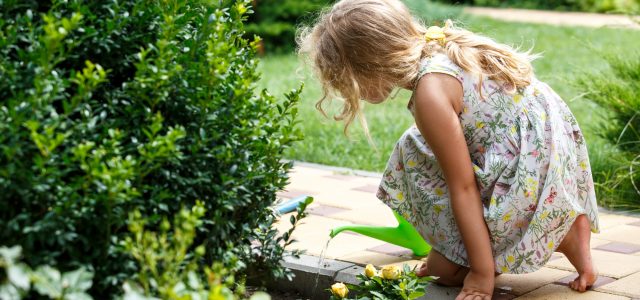
SEASIDE GARDENS
If you live by the coast or you have a beautiful seaside holiday home, creating a coastal garden isn’t as hard as it sounds
All you need to create a lovely coastal garden are hardy plants, good shelter and some authentic nautical or seashore accessories.
Ideally, you should make the most of the unique features of a coastal landscape and incorporate them into your plot – creating a garden that sits well in its setting and doesn’t need too much maintenance.
Go for either a natural, seaside-landscape style or a contemporary garden based on seaside features and don’t forget to provide a bit of shelter with prudent planting or driftwood fencing.
Before you start make sure you know what the local weather conditions are like as they vary round the coast of the UK from mild climates where exotic plants can grow to exposed and windy areas where only the most hardy of plants will survive. Have a look at other gardens to see what grows best and talk to local nurseries and garden centres for good plant advice.
Of course, you don’t need sea views to get the fun, informal look in your own outdoor space. Most coastal plants will thrive in any garden with well-drained soil and a sunny spot. Some of the most popular include:
Rosmarinus officinalis – Rosemary
A woody, hardy Mediterranean herb that’s perfect for a seaside spot. It’s an evergreen and has delicate lavender blue flowers in summer.
Eryngium variifolium – Sea Holly
Striking silver foliage and statement blooms with prickly cone-like heads, it copes well with sandy soil, so perfect for seaside gardens.
Armeria Maritima – Thrift
A robust, low-growing plant that is ideal for paths and borders, or to use in rockeries. It’s an evergreen and has small pink pompom flowers in summer.
Crambe Maritima – Sea Kale
A great foliage plant with undulating silvery green leaves – and like other kale is edible. It dies back over the winter but regrows in spring.
Limonium latifolium – Sea Lavender
A very tough plant that looks deceptively delicate, with gossamer stems that produce a mass of tiny pink purple flowers.
For coastal gardens always do initial planting in late spring and early summer so plants can become established before the winter winds and keep new plants well watered at first.
WHAT THE EXPERTS SAY
And watering is top of the ‘to do’ list this month for gardeners everywhere as the temperature rises:
This is often one of the hottest months of the year and a great time to sit out and enjoy your garden. Keep plants looking good by regularly dead-heading, and you’ll enjoy a longer display of blooms. Make sure you keep new plants well watered, using grey water where possible, and hoe off weeds, which thrive in the sunshine.
RHS
Keep plants looking lush and flowering for longer with regular feeding and watering. You’ll get more flowers in borders, containers and hanging baskets by adding a liquid feed once a week to the watering regime and that also applies to vegetable crops to ensure the best growth. Mow the lawn at least once a week this month and trim the edges after cutting for a neat finish – and give it a summer feed. Deadheading flowering plants is important to keep your displays looking fresh plus it prolongs the flowering period. Pinch off the flower head with your finger and thumb or use a pair of scissors or secateurs. Make sure you take the seed pod away too because the plant will then use its energy to form new buds rather than developing the seeds.
David Domoney
TV gardener and presenter

